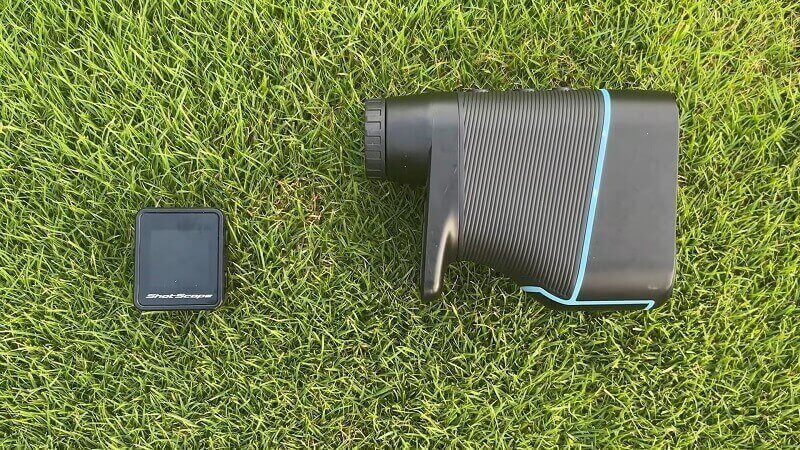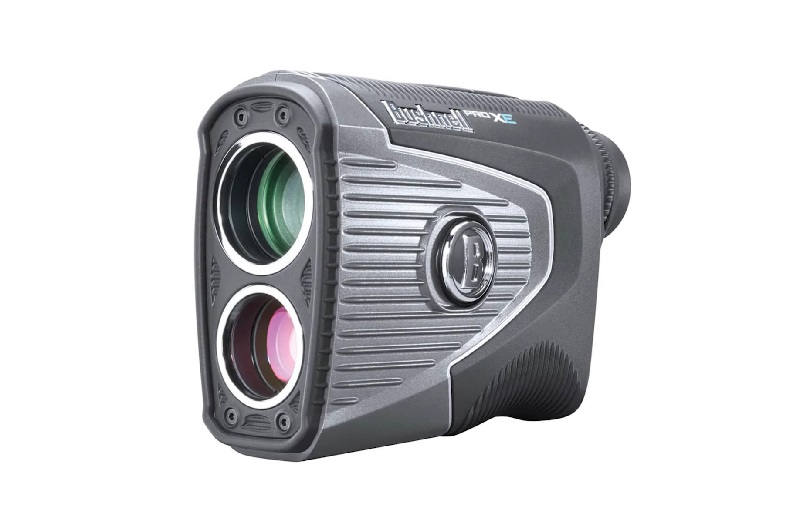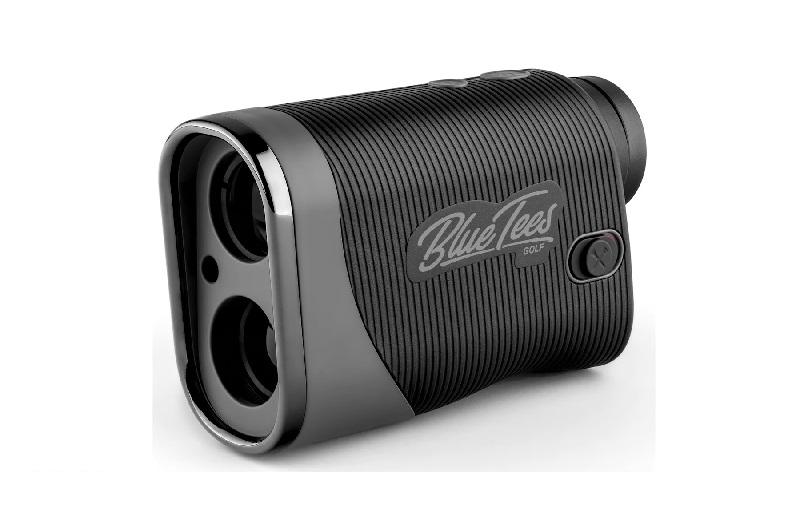Golf rangefinders are invaluable for any golfer looking to improve their game. Rangefinders use lasers to accurately measure the distance between a golfer and their target, allowing them to make more informed decisions when selecting clubs or aiming shots. With this technology, golfers can easily consider obstacles and other factors that would otherwise be difficult or impossible to calculate by eye. In this article, we’ll explore how rangefinders work in detail and discuss the various features they offer, as well as the benefits of using one on the course.
What Is A Golf Rangefinder?
A golf rangefinder is a device that uses a laser or GPS technology to measure the distance between the golfer and their target. Laser rangefinders work by emitting a laser beam reflecting off the target and returning to the device. GPS rangefinders, on the other hand, use satellites to determine the golfer’s location and the location of their target.
These sophisticated tools have become increasingly popular, providing players with a precision that would have been impossible in the past. With a golf rangefinder, you can always be sure your shot will be spot on.
How Important Is A Golf Rangefinder?
As a professional golfer must have a golf rangefinder during a game. Its ability to determine the distance to the flag, hazards, or any other crucial point on the course significantly reduces the time needed to judge your shot. It also ensures that you select the appropriate club and make an accurate swing, resulting in fewer miss-hits and, ultimately, better scores.
The importance of golf rangefinders is limited to professionals and a valuable tool for amateur golfers looking to improve their game. They provide an easy way to gain more confidence in making shots and enhance the overall golfing experience.
Types Of Golf Rangefinders

Golf rangefinders come in different types, each with its own features, advantages, and disadvantages. The most common types of golf rangefinders are GPS rangefinders, Laser rangefinders, and Optical Rangefinders.
GPS Rangefinders
GPS rangefinders use Global Positioning System technology to determine the user’s location and display a golf course map. The map shows the distance to various points on the course, such as hazards, greens, and fairways. GPS rangefinders can also provide information on the hole’s layout and recommend clubs to use based on the distance and the user’s abilities.
They come preloaded with maps of various golf courses, and some models allow users to download additional courses. GPS rangefinders can provide distance measurements in yards or meters and give the user a bird’s eye view of the course.
To use a GPS rangefinder, the user needs to turn it on and wait for it to locate the satellites. Once the device has a signal, it can provide accurate distance measurements and course information. GPS rangefinders may require periodic updates to ensure they have the most up-to-date course information.
Advantages and disadvantages of GPS rangefinders
GPS rangefinders have several advantages, such as providing accurate distance measurements and course information. They are also easy to use and do not require the user to have a clear line of sight to the target.
However, GPS rangefinders may not be as accurate as laser rangefinders, especially on courses with many trees or tall buildings. They may also have limited battery life and may not work well in areas with poor satellite coverage.
Laser Rangefinders
Laser rangefinders use laser technology to measure the distance to a target. The user aims the device at the target and presses a button to get a distance measurement. Laser rangefinders are known for their accuracy and are popular among serious golfers.
They have a built-in mechanism that measures the time it takes for the laser beam to reach the target and bounce back. This information is used to calculate the distance to the target.
To use a laser rangefinder, the user aims the device at the target and presses a button. The device emits a laser beam that bounces off the target and returns to the device. The device measures the time it takes for the laser beam to return and calculates the distance to the target.
Advantages and disadvantages of Laser Rangefinders
Laser rangefinders have several advantages, such as being highly accurate and easy to use. They can provide distance measurements to any target on the golf course, even if it is not visible to the naked eye.
However, laser rangefinders may not work well in low light conditions or on courses with many trees or obstacles. They may also require a steady hand and good eyesight to aim accurately.
Optical Rangefinders
Optical rangefinders, also known as “range scopes,” offer a unique way to measure the distance between you and your golf target. They work similarly to binoculars or a telescope, providing a fun and interactive way to improve your golf game.
Instead of relying on GPS signals or laser technology, optical rangefinders use an internal reticle to measure the angle and size of your target. This means you can use them in any weather condition without worrying about the technology failing.
Advantages and disadvantages of Optical Rangefinders
One of the best things about optical rangefinders is their compact and lightweight design, making them easy to carry around the course. Plus, they offer a unique experience that allows you to get up close and personal with your target, providing a level of engagement that other types of rangefinders can’t match.
However, it’s important to note that optical rangefinders may not be as accurate as laser or GPS rangefinders, requiring a clear line of sight to your target. But if you’re looking for a fun and interactive way to improve your golf game, an optical rangefinder could be the perfect addition to your golfing gear.
Did you get the above information already? Now let’s dig deeper into how they work – how they measure and display results.
How Do Laser Rangefinders Work?

Laser rangefinders are a popular choice for golfers looking to improve their game. But have you ever wondered how they work? Let’s take a closer look. First, let’s talk about the laser technology behind these devices. Laser rangefinders use a low-power laser beam to measure the distance between the device and a target. The laser beam bounces off the target and returns to the rangefinder, where it is measured and calculated to determine the distance.
Now, let’s break down the components of a laser rangefinder. These devices typically consist of a scope or viewfinder, a laser emitter, and a receiver. The scope allows you to target your desired object while the emitter sends out the laser beam, and the receiver receives the beam once it bounces back. The laser beam emitted by the rangefinder is typically in the infrared spectrum, which is invisible to the human eye.
So, how does the laser rangefinder actually measure distance? The device uses a time-of-flight measurement, meaning it calculates the time it takes for the laser beam to travel to the target and back. This time is then converted into distance using the speed of light as a constant.
Finally, let’s talk about how the laser rangefinder displays its results. Most devices provide distance measurements in yards or meters, and some even offer additional features such as slope adjustments to factor in elevation changes. The results are typically displayed on a small screen located within the device, making it easy to read and use during your game.
Laser rangefinders are a reliable and efficient tool for golfers looking to up their game on the course.
How Do GPS Rangefinders Work?
Unlike laser rangefinders, GPS rangefinders don’t use a laser beam to measure distances between you and your target—instead, they rely on global positioning satellites (GPS) to determine your exact location and the distance from you to your target. The GPS rangefinder receives signals from at least four GPS satellites to measure distance.
The device typically consists of a viewfinder, GPS antenna and receiver. The viewfinder allows you to select your desired target, while the antenna and receiver locate the exact coordinates of your position as well as that of your target. This information is then used to calculate the distance between you and your target.
GPS rangefinders offer some distinct advantages over laser rangefinders. For starters, they provide accurate readings regardless of the visibility conditions since they don’t rely on a clear line of sight to your target. Plus, GPS rangefinders are typically more compact and lightweight than their laser counterparts.
GPS rangefinders can also provide additional information such as elevation changes, club recommendations and more. This makes them a great choice for golfers looking to improve their game on the course.
How Do Optical Rangefinders Work?
Unlike laser and GPS rangefinders, optical rangefinders don’t use advanced technology to measure distance—instead, they rely on your eyes. Optical rangefinders work by superimposing a reticle onto the viewfinder, which you can use to determine distances between you and your target.
The device typically consists of a scope or viewfinder with a built-in reticle and focusing knob. The viewfinder selects your desired target, while the reticle and focusing knob measure distances precisely.
Optical rangefinders can be a great choice for golfers who don’t need the advanced features offered by laser and GPS devices. Plus, they’re typically more affordable than their counterparts, making them a cost-effective option for golfers on a budget. However, the accuracy of an Optical rangefinder is the worst compared to GPS and Laser.
Factors That Affect The Measurement Results

When using a rangefinder, there are some factors that can affect the accuracy of its results. One of the most important is line-of-sight visibility—laser and GPS rangefinders rely on clear paths between you and your target to measure distances accurately. Additionally, obstacles such as trees or buildings can also interfere with readings from laser and GPS devices.
For optical rangefinders, the accuracy of results is largely dependent on how well you can see your target through the viewfinder. Inclement weather or poor lighting conditions can make it hard to get accurate readings. Fortunately, most rangefinders now have features that allow you to adjust to these types of conditions.
What Factors to Consider When Choosing a Golf Rangefinder?
Now that we’ve discussed the different types of golf rangefinders and how they work, it’s time to discuss what factors should be considered when selecting one. Here are some important things to keep in mind:
Accuracy
Accuracy is one of the most important factors to consider when selecting a golf rangefinder. You want a rangefinder that is reliable and precise so that you can trust the readings it provides. Look for a rangefinder with a high level of accuracy, typically 1/10 yard of the target.
Range
The range of the rangefinder is another important consideration. You want to make sure that the rangefinder can accurately measure the distance to targets at the distances you typically encounter on the golf course. Most rangefinders have a range of 400-1000 yards, but some models can measure up to 2000 yards.
Display
The display of the rangefinder is also important. You want a display that is clear and easy to read, even in bright sunlight. Look for a display with high contrast and large numbers.
Battery Life
Battery life is another important consideration. You don’t want to run out of battery power in the middle of a round. Look for a rangefinder with long battery life, typically at least 10-15 hours of continuous use.
Ease of Use
A golf rangefinder should be easy to use, with intuitive controls and a user-friendly interface. Look for a rangefinder that is easy to operate with one hand, and that doesn’t require a lot of technical knowledge to use.
Size and Weight
The size and weight of the rangefinder are also important considerations. You want a rangefinder that is compact and easy to carry on the golf course. Look for a lightweight model that won’t add too much extra weight to your golf bag.
Cost
The cost of the rangefinder is also an important consideration. There are rangefinders available at a range of price points, from budget models to high-end options. Consider your budget and the features you need when selecting a rangefinder.
Rangefinders can vary greatly in their cost, so it’s important to determine your budget before you start shopping.
Conclusion
Golf rangefinders are an excellent tool to have when playing a round of golf as they provide extremely accurate distance measurements. Rangefinders can provide yardage to the green, allowing golfers to identify the lay of their rounds to plan better. The convenience and accuracy of modern rangefinders make them invaluable for those interested in improving their golf handicap.
Whether you’re an experienced player or just beginning, hand-held rangefinding devices offer many advantages that outshine any possible disadvantages. With various features and options available, it can be difficult to decide which model is best for your needs; however, it is important to find one that matches perfectly with your game. Choosing a reliable rangefinder will give you more insight into distances on the course and improve your overall round score.
FAQs
Are Golf Rangefinders Accurate?
Most golf rangefinders have an accuracy of within one yard of the target. However, some high-end rangefinders can offer even greater accuracy, with some models boasting an accuracy of within 0.5 yards or even less. The accuracy of the rangefinder can depend on various factors, such as the quality of the rangefinder, the distance to the target, and the weather conditions. It’s important to note that while rangefinders are generally very accurate, they are not infallible, and golfers should use their own judgment and experience combined with the rangefinder’s measurements to make informed decisions on the course.
Is It Possible To Use A Rangefinder In Tournaments?
Rangefinders are allowed in some golf tournaments. However, it is important to check with the tournament organizer beforehand, as not all tournaments allow rangefinders. Additionally, there are also rules governing the use of rangefinders during tournament play, such as not being able to measure a slope or having someone else do the measurements for you.
Are Pga Pros Allowed To Use Rangefinders?
PGA pros are allowed to use rangefinders in competition. The USGA and the R&A have both changed their rules for amateur competitions, allowing amateur players to use distance-measuring devices in competition. However, players are still only allowed to measure distances to the flagstick and other obstacles, not distances between two points on the golf course.


